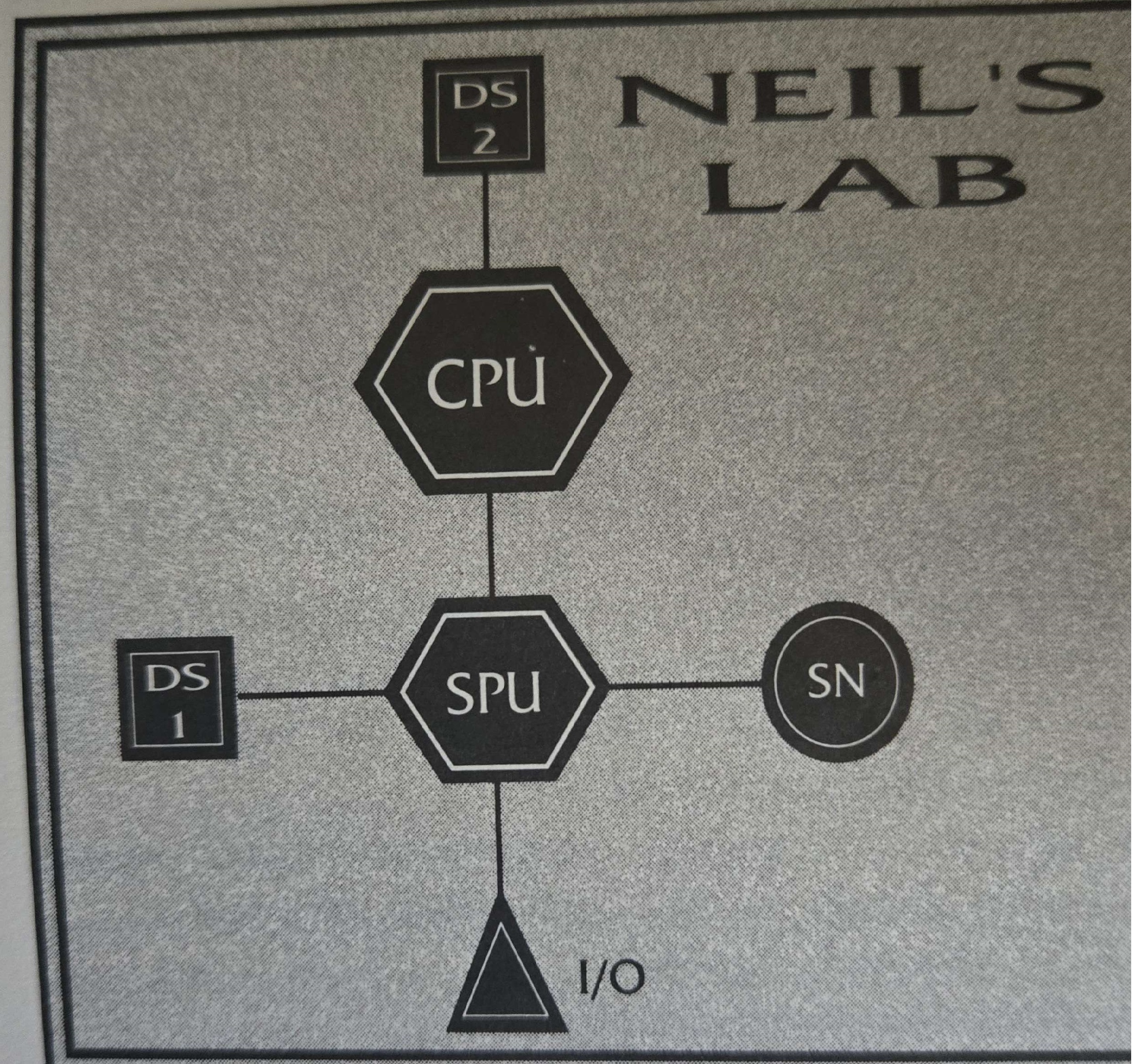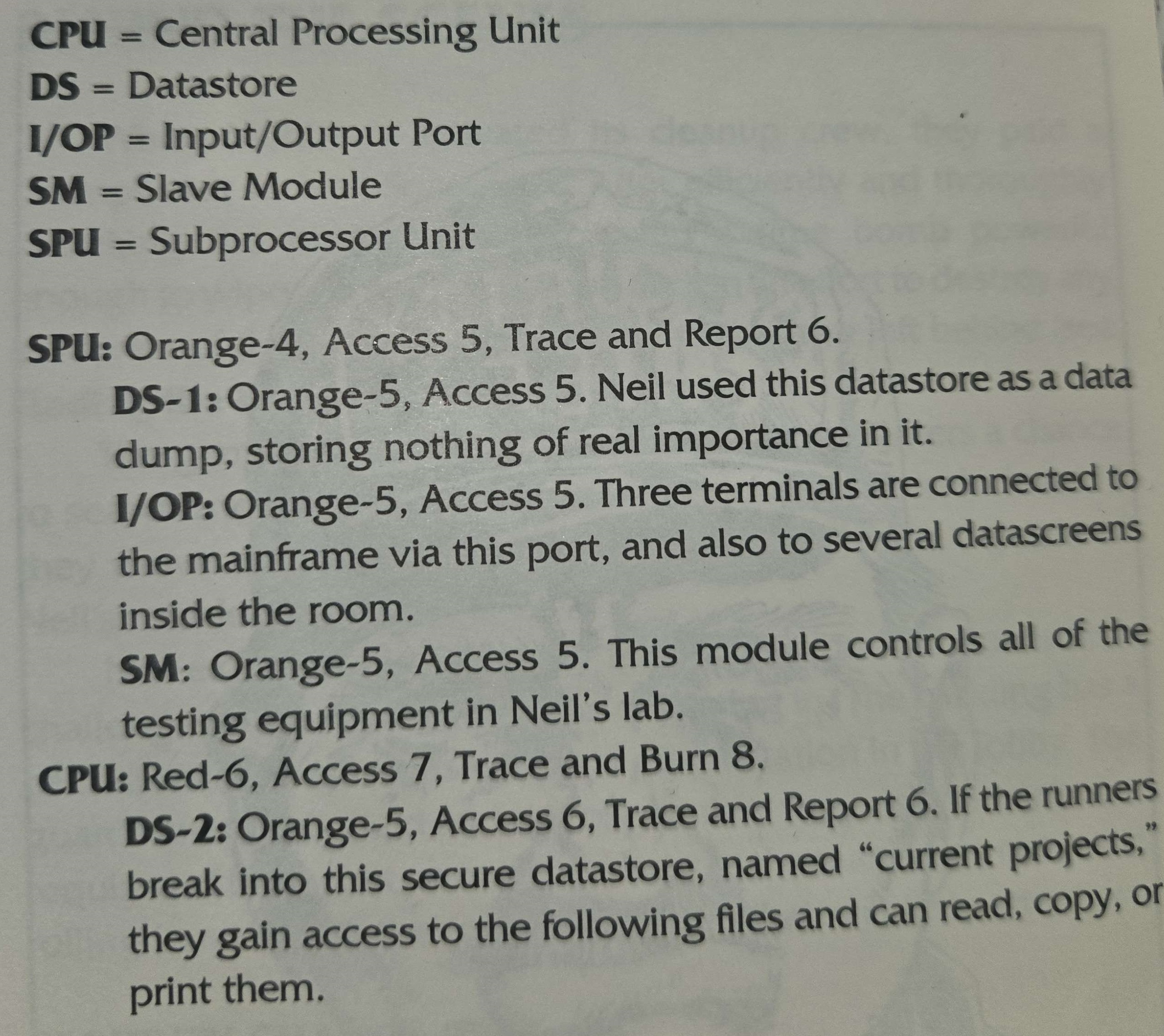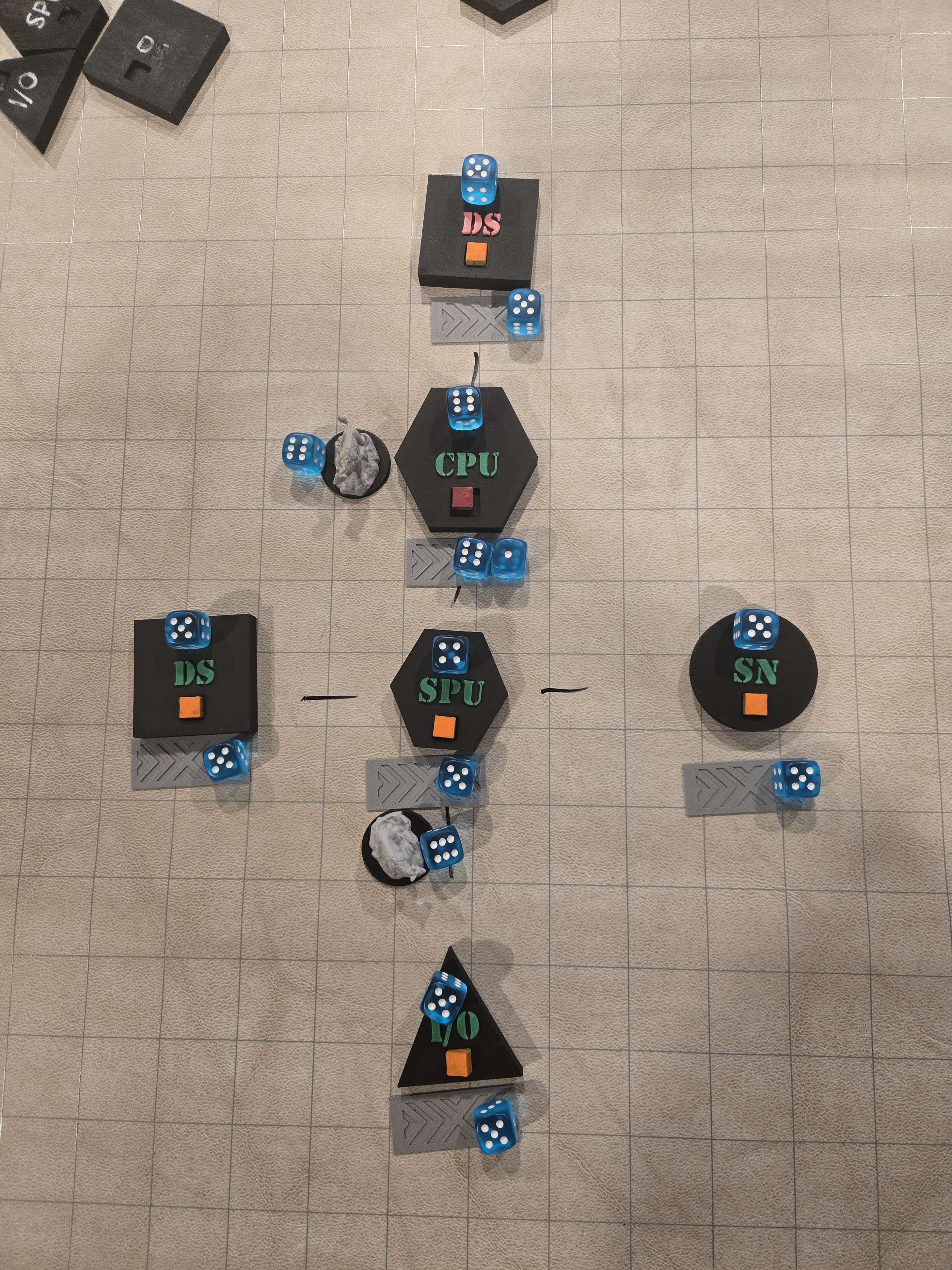Shadowrun 2nd Edition Matrix 3D Prints
May 10, 2025

Before we get into this one. I have uploaded and hosted the old "Decker" game created by Shawn Overcash in 2001. It was then remade in Javascript in 2018 by Palparepa. You can find it here. Also I did land my first award from DriveThruRPG. Thank you everyone who supported my efforts!
As you might have imagined, I've started leaning more into 3D prints for my tabletop adventures. There is something special about laying down custom made props that just makes everything at the table feel better. As I talked about in my Benefits of Physical Props post, this is something I feel pretty strong about.
So, why SR2 Matrix? Well honestly, this all stems from a video Seth Skorkowsky made on TTRPG Reviews. In this review he talks about people who do reviews (like myself) and in it, he specifically talks about people who are reviewing adventures they haven't run. At first I felt pretty called out. I too reviewed a lot of adventures I hadn't run (Though I had played in most). The more I got to thinking about it the more I realized he was right. It was kind of night and day different in how I felt preparing for an adventure and seeing it laid out in front of me when my players were hitting the obstacles and puzzles each adventure had. So, I made a decision. I was going to run these adventures before giving my thoughts on them.
If I was going to go with this approach, I also wanted to try to be as faithful as possible to what it was like running this adventure in its original context. So that means, using the original Matrix/Spellcasting/etc systems. I thought, if I am going to do this, I should really attempt to turn it up to 11. What would I have wanted to see/do when I was first started? So, I made that.
Design Process
For those interested in the nitty gritty, this process is surprisingly easy for such a simple and small project. Luckily, the standard nodes are all simple geometric shapes. I used a program that comes with Windows 10, 3D Builder. It allows for simple inserts of objects as long as they fit their predefined shapes. So I made some shapes roughly 50mm across (Something big enough to easily see, small enough that many stacked together wouldn't take up the whole table) and I attempted to keep them uniform. Finally, I needed to make it modular for any time/place so that the system could be used and reused without either having to have 100 different pieces and 5 different colors (Also how the hell was I going to make an “ultraviolet” color anyway?
This is where the colored pegs came into play. I figured I could easily put a single smaller d6 (or the VERY rare d10) to show the rating of the nodes, then a colored peg to show the system after it had been scanned. The pegs were small, very easy to print dozens of and it took the need of the color off the actual geometric shape. So, I could easily print 50 of them, then quickly paint them. I only need 1 color of system nodes now.
Gameplay Integration
A lot of GMs for Shadowrun avoid maps. I think a lot of this stems from Shadowrun's movement rules being whacky regardless of what edition you are playing. I'm one too that for the most part, I will avoid mapping because I always felt like it took up too much time. It wasn't until a friend of mine showed me how immersive printed terrains and the likes really changed the game and the player buy-in. That's something I covered more in my other post, but for the Matrix, the complexity is already there on this kind of “dungeon crawl”. I think having everyone know precisely where the nodes are, what they are and how you get from A to B. It helps speed things up pretty drastically. It also keeps you from having to explain or having to have the player map it themselves and make some assumptions and reexplaining it.
You could easily draw it out on a map, marking it up, etc. I think however going the extra mile to make the physical representation really help get more people at the table into the whole matrix experience. I came up with a few small prints for IC, but one thing occurred to me as I was working out how to make IC and I realized, I have ALL of these DnD monsters. Most of them have IC modeled after them, making it perfect for placing down as IC on different systems.
This adds a lot of tension I discovered as people try to figure out what each monster could possibly represent, but if they have a deeper meaning. Which is what you want out of IC anyway. Plus it gives you a great use / reason to buy more DnD minis! We all need a reason for that right?
Full STL Files
I uploaded my build to Thingverse. This should give you everything you need if you want to make it yourself. It includes basic models and models that require an AMS (For Bambu 2 color printing). I will make a few more individual models for people who want to give it a go and will keep adding to it if people want to give it a try themselves!
Also here are a few images of the build


Vote on the Next Adventure Review
I am currently running Eye Witness using the original SR2 Matrix rules. I will be writing my new review on that! What would you like to see next?
